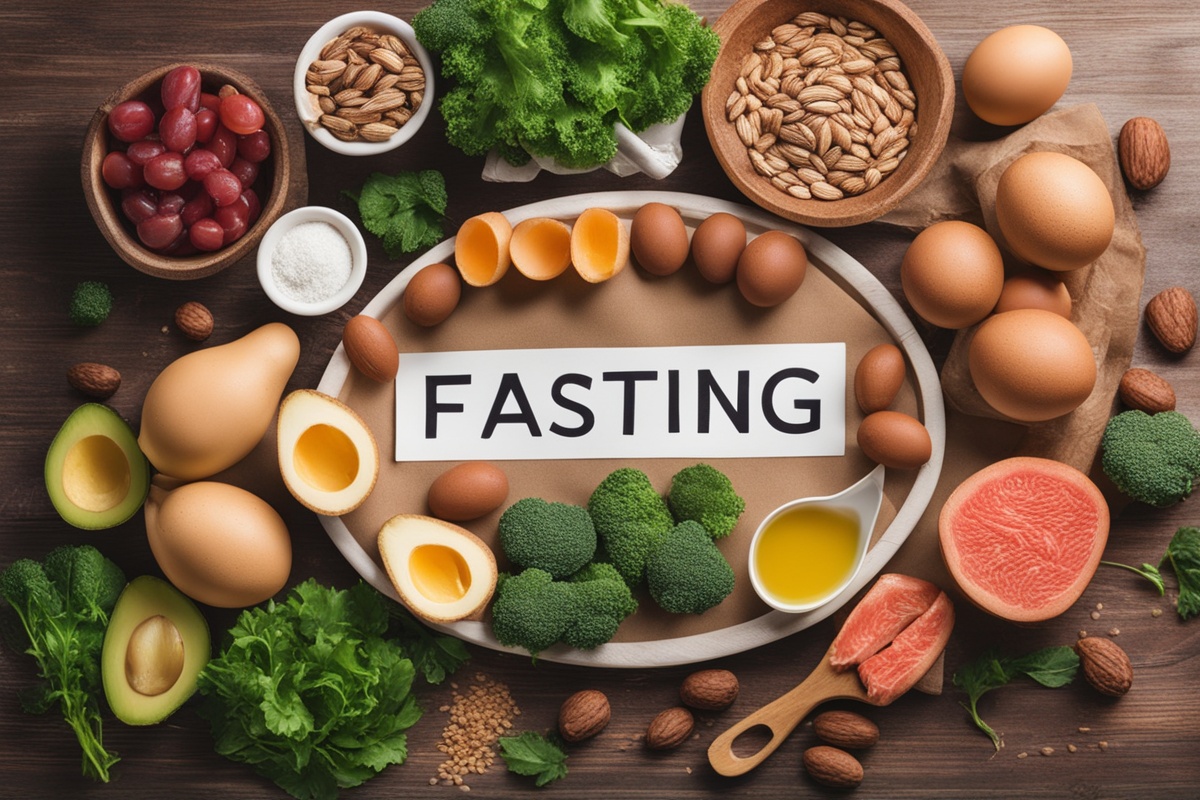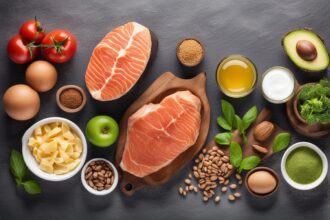Hey there, health enthusiasts! If you’ve been exploring ways to optimize your wellness, boost energy, and shed some extra pounds, you’ve likely stumbled across two popular trends: the ketogenic diet and intermittent fasting. But what happens when you combine these two powerful strategies into what’s often called keto fasting? Spoiler alert: It’s a game-changer for many! In this post, we’re diving deep into the world of keto and fasting, breaking down how they work together, the science behind their benefits, and practical tips to help you get started. Whether you’re a newbie or a seasoned faster, there’s something here for everyone looking to enhance their health journey.
What Is Keto fasting?
Let’s start with the basics. Keto fasting is the combination of a ketogenic (keto) diet—a high-fat, moderate-protein, low-carb eating plan—with intermittent fasting (IF), which involves cycling between periods of eating and not eating. The keto diet pushes your body into a state of ketosis, where it burns fat for fuel instead of carbs, producing ketones as an energy source. Fasting, on the other hand, gives your digestive system a break and can enhance fat-burning processes. When paired together, keto and intermittent fasting create a synergistic effect, amplifying fat loss, mental clarity, and metabolic health. Think of it as a double whammy for your body’s ability to tap into stored fat!
The Science Behind Keto and Fasting
Why does keto fasting work so well? It all comes down to how these two approaches impact your hormones and metabolism. On a keto diet, drastically reducing carbs lowers insulin levels—a hormone that promotes fat storage—while increasing glucagon, which helps release stored energy. Fasting takes this a step further by triggering autophagy, a cellular cleanup process, and boosting human growth hormone (HGH), which supports fat burning and muscle preservation. Studies, like those published in the journal Obesity, show that intermittent fasting can enhance weight loss and improve insulin sensitivity, especially when paired with a low-carb diet like keto. Together, they keep your body in a fat-burning mode for longer, making it easier to achieve and maintain ketosis.
Benefits of Combining Keto with Fasting
The perks of keto intermittent fasting go beyond just weight loss. Here are some of the top reasons people are raving about this combo:
- Faster Ketosis: Fasting helps deplete glycogen stores quickly, speeding up the transition into ketosis when following a keto diet.
- Improved Mental Focus: Ketones, produced during ketosis, are a preferred fuel for the brain, and fasting can enhance cognitive clarity.
- Enhanced Weight Loss: Both methods reduce appetite by stabilizing blood sugar and increasing satiety hormones like leptin.
- Better Metabolic Health: This duo can lower blood sugar, improve insulin resistance, and reduce inflammation markers.
- Cellular Repair: Fasting triggers autophagy, helping your body repair damaged cells and potentially slow aging.
How to Start Keto Fasting Safely
Jumping into keto and fasting can feel intimidating, but with the right approach, it’s totally doable. The key is to ease into it and listen to your body. Start by choosing a fasting protocol that suits your lifestyle, like the 16:8 method (fast for 16 hours, eat during an 8-hour window) or a 5:2 approach (eat normally for 5 days, restrict calories on 2 days). Pair this with a keto meal plan focusing on healthy fats like avocado, olive oil, and nuts, moderate protein from eggs or salmon, and minimal carbs from leafy greens. Stay hydrated—water, black coffee, and herbal teas are your best friends during fasting windows. If you’re new to either keto or fasting, don’t combine them right away; spend a week or two adapting to one before adding the other to avoid overwhelm or the dreaded “keto flu.”
Common Challenges and How to Overcome Them
Let’s be real—starting keto fasting isn’t always smooth sailing. You might face hurdles like hunger pangs, low energy, or cravings for carbs. But don’t worry; these are often temporary and manageable with a few tweaks. Here are some common issues and solutions to keep you on track:
- Hunger During Fasts: Sip on bone broth or add a pinch of Himalayan salt to water to replenish electrolytes and curb appetite.
- Energy Slumps: Ensure you’re eating enough healthy fats during eating windows to fuel your body for fasting periods.
- Cravings for Sweets: Opt for keto-friendly desserts like dark chocolate (85% or higher) or a small serving of berries.
- Social Eating Pressures: Plan your eating windows around social events or communicate your goals to friends for support.
Who Should Avoid Keto Fasting?
While keto and intermittent fasting can be transformative, it’s not for everyone. If you have a history of eating disorders, are pregnant or breastfeeding, or have medical conditions like diabetes or kidney disease, consult a healthcare provider before starting. Fasting and extreme carb restriction can also be stressful on the body if not done correctly, potentially leading to hormonal imbalances in some individuals, especially women. Always prioritize personalized advice over one-size-fits-all trends, and remember that sustainable health is the ultimate goal. If you feel dizzy, overly fatigued, or unwell while trying keto fasting, take a step back and reassess with professional guidance.
As we wrap up, it’s clear that keto fasting offers a potent combination for those looking to supercharge their weight loss, mental clarity, and overall health. By leveraging the fat-burning power of ketosis and the metabolic reset of fasting, you can unlock benefits that go beyond the scale. Remember to start slow, stay hydrated, and tailor this approach to your unique needs. Whether you’re aiming to drop a few pounds or simply feel more energized, combining keto with fasting could be the key to reaching your goals. Have you tried keto intermittent fasting yet? Drop your experiences or questions in the comments—I’d love to hear from you! Let’s keep the conversation going and support each other on this incredible health journey.






